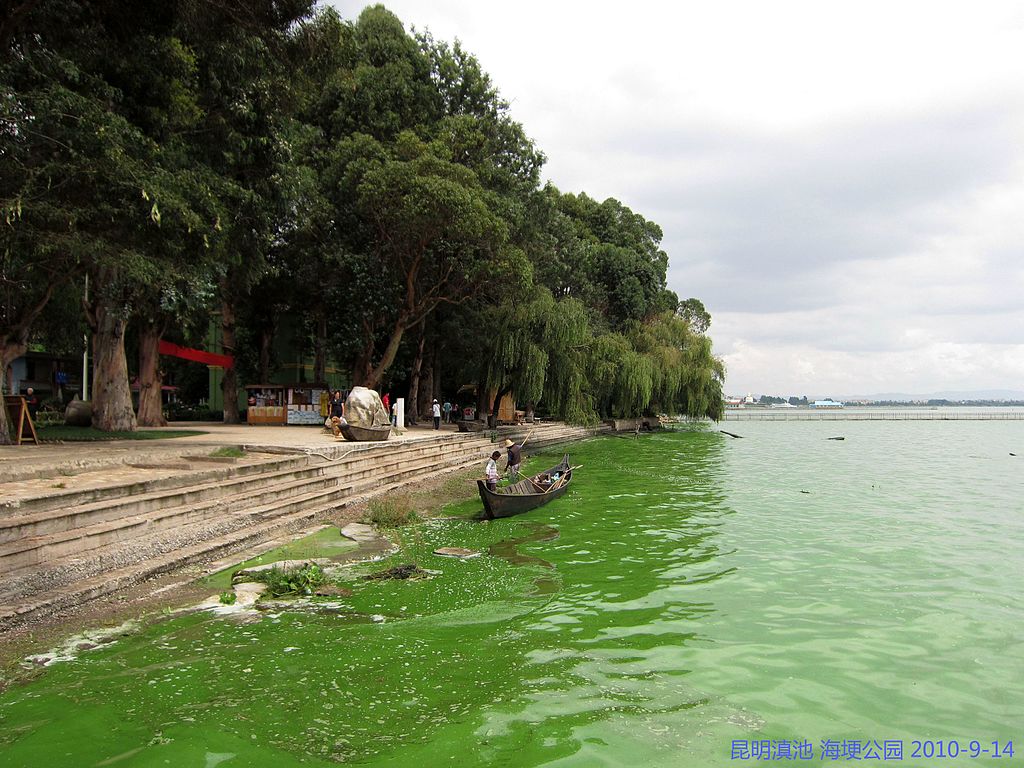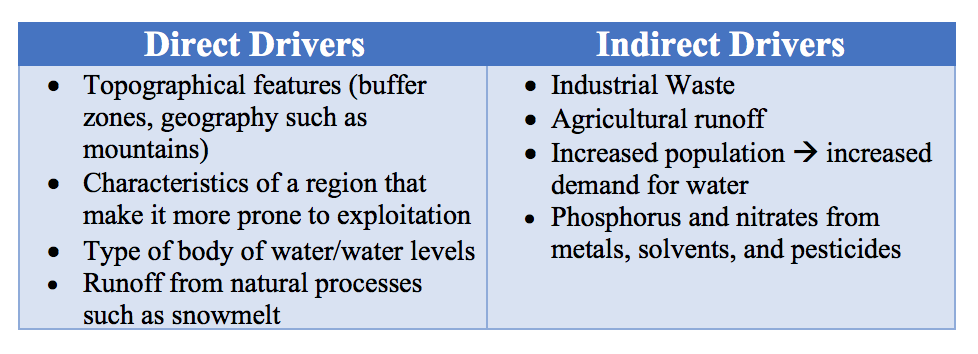Definition
Water contamination occurs when harmful substances—often chemicals or microorganisms—contaminate a stream, river, lake, ocean, aquifer, or other body of water, degrading water quality and rendering it toxic to humans or the environment.
Causes
1. Population growth (desire, waste, human activities)
2.Industrial pollution
3.Wastewater management (waste disposal)
4.Water conservation
5.Agricultural pollution (chemical farm inputs)
Effects
1.Poor animal and human health (all kinds of sicknesses)
2.Water shortages
3.Less entertainment (swim, go fishing or boating)
4.Economic development (adverse influence)
China may be the richest and fastest developing country in the world, but water pollution has plagued the country so that half of its population does not have access to clean and safe drinking water.
Studies conducted by China's Ministry of Water Resources suggest that 43% of state-monitored rivers are too filthy even for human contact. Water contaminated by human and industrial waste is consumed by over two-thirds of China's rural population, which is over 500 million people.
While there can be no doubt that villages and rural areas of China suffer more from the crisis, urban areas and major cities are not immune to the problem either. According to World Bank, cities in Northern China like Beijing, Tianjin, Shijiazhuang have a more acute problem with water contamination and shortages than Southern China. 45 % of Northern China's water reserves saved for human consumption are considered unsafe, compared to 10 % in southern China.
China's three greatest rivers - Pearl, Yellow, and the Yangtze are so contaminated that it is hazardous to swim in the water or consume fish from them. The accumulation of industrial and human waste has caused pollution-induced algae blooms to frequently occur in China's lakes, causing the surface water to appear a brilliant iridescent green. What is alarming is that worse dangers lurk beneath the surface of these murky waters. According to a recent government assessment, 90 % of the underground water in China is contaminated.
People in China are regularly forced to drink water that includes harmful quantities of arsenic, fluorine, and sulfates. Every day, an estimated 980 million of China's 1.3 billion citizens consume somewhat polluted water. More than 600 million Chinese people consume water that has been contaminated with human or animal waste, and 20 million people drink well water that has been poisoned with significant levels of radiation. Arsenic-tainted water has been discovered in huge quantities from these drinking wells. Water contamination has been connected to China's high rates of liver, stomach, and esophageal cancer. The World Bank has warned China of 'catastrophic consequences for future generations' as a result of its water shortage and pollution.

The degree of pollution varies and is partially dependent on the geographical setting. Pollution can be caused by point and non-point source pollutants, as well as direct and indirect drivers:

Water pollution in China most directly impacts the lives of people living along the basin of polluted rivers and lakes in China’s rural regions. Populations in these regions typically are of lower socioeconomic status and are more likely to be of a minority ethnicity within China. For example, twenty-six ethnic minority groups live within the urban and rural boundaries of Kunming, the capital of Yunnan province and a site of heavy rural industrialization and pollution (PRC 2008).
Development and population growth have adverse effects on the environment, and thus they are the major causes of water contamination in China. Water is essential for human livelihood and a basic requirement for industrial and economic growth. However, with the government focusing on economic growth, little attention is given to water conservation, thus leading to increased pollution in the country.
High population density implies escalated domestic effluents, which need high mass treatment plants, as illustrated in figure 1. However, if the treatment plants are mismanaged, there is a high risk of water contamination in the country. Industries must adhere to the set of government policies in order to reduce water and environmental pollution. However, little has been done in ensuring that the policies are followed.
The high population density in urban areas and intense industrial activities pose great challenges to the environment. China is rated as the fastest growing economy in the world, and it has numerous industries that create numerous employment opportunities (Zheng & Kahn, 2013).
China has a low water supply with regard to its population density, and thus people are forced to share the available amount with the industries. Hence, there is a challenge in water conservation and wastewater management issues. The three major causes of water contamination in China include industrial and agricultural pollution among other human activities.
China has a high population density of industries and the majority of them are located in major cities across the country. Most industries use large volumes of water in their operations and they end up emitting wastes into the environment.
China has the highest number of coal power plants in the world. The high population of people exerts intense pressure on the available electrical energy, which forces the country to produce energy from coal because it is cheap and capable of meeting the demand.
However, coal energy production has adverse effects on the environment whereby there is the usage of huge volumes of water for cooling the plants and high volumes of carbon gases emitted into the air, thus causing pollution. In addition, the emitted water contains carbon, and thus it is not safe for animal and human use (Liangliang, Chen & Ping, 2014).
Water contamination is active in the atmosphere. In this case, polluted air contaminates water while in its cycle process. The Chinese cities have the most polluted air in the world as evidenced by the smog in the atmosphere, which often hinders visibility. This aspect comes from air pollution and industries contribute the highest pollutant elements in the atmosphere.
The dense population of industries in the cities causes a high risk of air pollution due to the high mass of air pollutant concentration in a small area. This aspect often causes the atmospheric air circulation to take a long time to clear off the polluted gases in the air.
Consequently, the air becomes polluted, and in case of rain, the ground water becomes contaminated, hence unsafe for the animal and human consumption. Also, industries emit effluents that demand complex water-treatment process, but some firms have failed to install effective treatment plants. Hence, they end up emitting contaminated water into the environment.
Agricultural pollution is another major cause of water contamination in China. A vast majority of the Chinese population lives in urban areas, which implies that few people are available to provide labor in rural areas. Hence, there is scarce human capital for agricultural activities, which compels farmers to rely on chemical farm inputs such as pesticides, herbicides, and fertilizers.
Chemicals components in pesticides and herbicides take a long time to disintegrate, and thus they pose a high risk of contaminating water. Chinese farmers rely on chemical farming, as it is cheap and convenient.
However, this method has adverse effects on the water sources as evidenced by tests done on water flowing through farmlands in the recent past. In addition, fertilizers are very essential for farming activities and they are rich in nitrogenous compounds, which is essential for crop production. However, they are capable of contaminating water sources via leaching and soil erosion.
High population is a great risk to water contamination due to the huge volumes of wastewaters from residential areas in urban areas.

Currently, the rapid population growth of the urban population in China is estimated to reach approximately 80% by the year 2030 from 56% in 2007 (The World Bank, 2014). The increased urban population has led to the fast growth of cities whereby residential areas increase every week.
Consequently, there is increased pressure on the existing wastewater-oxidation treatment plants in the cities although efforts are being made by the government to increase the capacity of the existing and new ones. However, the current condition is disturbing due to the regular leakages by the majority of the plants in the country, thus leading to massive water contamination of clean water sources.
Cases of poor waste disposal mechanisms by urban populations often lead to the contamination of water sources. China is one of the leading countries in the awareness campaigns of the development of green cities whereby waste disposal mechanism are well managed and regulated by the local government.
The local governments introduced dustbins as a way of enhancing the cleanliness in the cities and a well-coordinated disposal mechanism of the collected waste in recycling and disposal plants. The program worked well for a long time as people could dispose of waste responsibly.
However, the current system has changed, and people have started to dispose of waste in undesignated places due to the adverse impacts of the increased urban population.
However, little has been done to increase the capacity of waste collection and disposal mechanisms by the local authorities as increased population adds pressure to the old system. Waste disposal areas are strained, which poses a great risk of contamination, especially during the rains when wastewater flows to the water sources in the surrounding areas.
Also, human activities are blamed for air pollution, which often leads to the contamination of water in China. During the winter, people have heating systems that cause air pollution. This aspect is evident in urban areas where fogs form in the atmosphere, thus reducing visibility.
Moreover, the increased pressure on power consumption during the winter strains the available power in the country, which often leads to an increase in the number of coal energy-production plants. These plants are blamed for causing air and water pollution in the country, but the government does little to ensure that clean energy power generation plants are built or the existing ones are expanded to withstand the rising demand.
However, coal power-generation plants are cheap as coal is available, but they have adverse effects on the human population. The increased urban settlement is clear evidence economically stable population, and thus, the majority can afford driving personal cars around the cities. It is estimated that more than 20% of the world’s car sales are done in China every year, which leads to increased carbon gas emission into the atmosphere in the cities.
Hence, the polluted atmosphere leads to the contamination of ground water sources due to acid rain. Initially, the Chinese towns and cities had plans that gave enough room for water conservation, and thus urban population enjoyed clean water sources. However, the situation has drastically changed with the increased urban population as well as the expansion of towns and cities in the country.
It is estimated that every Chinese town has surpassed 60% size increase since the 1980s due to massive economic growth and increase population. This aspect exerts great pressure on the original small sizes of towns and cities.
Consequently, the construction of buildings, road networks, and other development infrastructure expanded to places that were initially reserved for water conservation purposes. Consequently, there has been pressure on water conservation mechanisms due to the interference with the original plans.